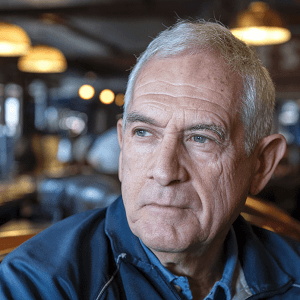Discover the exceptional capabilities of PC7 Epoxy, a revolutionary paste adhesive that’s transforming both DIY and industrial applications. Whether you’re tackling home repairs or managing complex industrial projects, understanding this versatile solution can help you achieve professional-grade results.
What is PC7 Epoxy?
PC7 Epoxy is a high-performance paste adhesive that combines exceptional strength with remarkable versatility. This two-part epoxy system stands out from liquid alternatives with its unique paste-like consistency, enabling it to fill large gaps and adhere to vertical surfaces without sagging.
Once mixed, it transforms into a moldable putty that can be shaped to meet various repair needs. Its water-resistant properties make it equally effective for both indoor and outdoor applications, from household fixes to marine repairs.
Understanding PC7 Epoxy Composition
The engineered composition of PC7 Epoxy consists of two primary components that work in synergy:
- Resin base – provides adhesive properties
- Hardener – acts as a catalyst for proper curing
- Specialized fillers – enhance gap-filling capabilities
- Thixotropic agents – prevent running and dripping
- Chemical additives – improve resistance to environmental factors
Unique Features of PC7 Epoxy
| Feature | Specification |
|---|---|
| Strength | Up to 3,960 psi |
| Temperature Range | -20°F to 200°F |
| Working Time | 45-60 minutes |
| Application Type | Above and below water line |
Applications of PC7 Epoxy
PC7 Epoxy’s versatility makes it an invaluable solution across numerous sectors. Its unique properties, including maximum strength and water resistance, enable it to handle diverse challenges in both professional and DIY settings.
Common Uses in Home Repairs
- Plumbing repairs and pipe sealing
- Concrete foundation crack repairs
- Ceramic and porcelain restoration
- Woodworking and furniture repair
- Outdoor fixture maintenance
- Automotive component repairs
- Garden tool and equipment fixes
Industrial Applications of PC7
- Heavy machinery maintenance and repair
- Marine equipment and hull repairs
- Manufacturing plant infrastructure maintenance
- Construction material bonding
- Mining equipment repairs
- Electronics component encapsulation
- Automotive and aerospace applications
Benefits of Using PC7 Epoxy
PC7 Epoxy distinguishes itself through exceptional performance characteristics that make it a preferred choice for professionals and DIY enthusiasts alike. Its maximum strength formulation creates bonds capable of withstanding extreme conditions, while its gap-filling properties ensure comprehensive coverage without sagging or shrinking.
The product’s outstanding water resistance and chemical resilience make it particularly valuable for challenging environments, including marine applications and outdoor installations. These properties, combined with its versatility and durability, position PC7 Epoxy as a comprehensive solution for diverse repair and bonding needs.
Durability and Strength
PC7 Epoxy demonstrates exceptional strength capabilities with a bond strength of up to 3,960 psi after curing, making it ideal for heavy-duty applications requiring maximum holding power. This remarkable strength ensures the epoxy maintains its integrity even under significant stress, vibration, and impact, delivering long-lasting repairs and bonds.
- Temperature resistance from -20°F to 200°F
- Excellent resistance to weathering and UV radiation
- Strong chemical resistance against oils and fuels
- Resilient against mild acids
- Suitable for both indoor and outdoor applications
Versatility in Different Conditions
The unique paste-like consistency of PC7 Epoxy enables application on vertical surfaces without dripping or sagging, surpassing liquid epoxy alternatives. Its exceptional gap-filling properties make it suitable for bonding both smooth and irregular surfaces across multiple materials:
- Wood and metal surfaces
- Concrete structures
- Ceramic materials
- Various plastics
- Underwater applications
- High-humidity environments
How to Use PC7 Epoxy Effectively
PC7 Epoxy’s unique paste-like consistency enables precise application on various surfaces, even in challenging positions. With a generous working time of 45-60 minutes, it allows for careful placement and adjustment during complex repairs or large-scale projects.
Step-by-Step Application Guide
- Surface Preparation – thoroughly clean surfaces, remove dirt, grease, and loose particles; lightly sand smooth surfaces
- Mixing – squeeze equal parts of resin and hardener onto a disposable surface; mix thoroughly for 2-3 minutes until uniform
- Application – apply mixed epoxy using a putty knife or gloved hand; slightly overfill gaps
- Bonding – press surfaces together firmly and remove excess epoxy
- Curing – allow 60 minutes for initial set; full cure takes 24 hours at room temperature
- Finishing – sand, drill, or paint the cured epoxy as needed
Tips for Best Results
- Work in temperatures between 60°F and 80°F for optimal curing
- Use equal parts of resin and hardener for proper strength
- Ensure complete blending for full strength activation
- Apply promptly after mixing to maximize working time
- Use a wet finger or tool for smooth finishing
- Apply in layers for thick repairs
- Clean tools with rubbing alcohol or vinegar before curing
PC7 Epoxy vs Other Epoxy Solutions
PC7 Epoxy stands apart with its unique formulation offering maximum strength, superior gap-filling capabilities, and excellent water resistance. Its paste-like consistency enables precise vertical surface application without dripping, surpassing liquid epoxies in challenging repair scenarios.
Comparative Analysis of Epoxy Adhesives
| Feature | PC7 Epoxy | Standard Epoxies |
|---|---|---|
| Consistency | Paste-like, non-drip | Typically liquid |
| Working Time | 45-60 minutes | Usually 5-30 minutes |
| Strength | Up to 3,960 psi | Varies significantly |
| Application Control | High precision | Limited control |
Why Choose PC7 Over Others?
PC7 stands out in the epoxy market through its exceptional combination of strength and versatility. Its superior strength characteristics make it the go-to choice for heavy-duty repairs where standard adhesives might fail. The unique gap-filling capability enables effective repairs on irregular or damaged surfaces, while its water-resistant properties ensure durability in moisture-prone environments.
- Maximum strength for demanding repairs
- Superior gap-filling capabilities
- Excellent water resistance
- Versatility across multiple applications
- Chemical and heat resistance
- Cost-effective all-purpose solution
Safety Tips for Handling PC7 Epoxy
Working with PC7 Epoxy demands careful attention to safety protocols to ensure both user protection and environmental responsibility. This industrial-strength adhesive contains potent chemicals that require proper handling procedures and adequate workspace preparation.
Protective Measures and Equipment
- Chemical-resistant gloves for hand protection
- Safety goggles or face shield for eye protection
- Respirator mask for areas with limited ventilation
- Well-ventilated workspace with proper air circulation
- Clean, organized work area to prevent accidents
- Accessible eyewash station or sink for emergencies
Disposal and Environmental Considerations
Environmental responsibility is crucial when using PC7 Epoxy. Never dispose of uncured epoxy through drains or regular waste channels. Allow unused mixed epoxy to fully cure before disposal, and always verify local regulations for proper disposal methods.
- Allow mixed epoxy to fully cure before disposal
- Consult certified waste disposal services for large quantities
- Clean tools before epoxy cures
- Use appropriate solvents for cleanup
- Dispose of cleaning materials properly
- Follow local environmental regulations





Leave a Reply